The Dangers Of Too Much Sitting And What You Can Do to Avoid Them
The global coronavirus pandemic has created a “working-from-home economy,” and some estimates place as much as 42% of the U.S. labor force as working from home full-time. Working from home has been a critical strategy in the fight against COVID-19 – and any other future pandemics. And there is the possibility that more people will remain working from home permanently as a result. My staff and I have been part of this shift. Gyms closed in March of 2020 here in New York City and we since took our personal training services 100 percent online. Thankfully, we have been so successful with online training, that when gyms re-opened, we were able to remain exclusively online and continue to provide our clients with the high standards of service that we provided in person, (and most importantly, outstanding results). It’s quite a switch after 30 years of training clients face to face, and one of the most notable physical differences for me is how much more time I spend sitting in front of a screen. Before the pandemic, a full day of personal training saw me clocking over 10,000 steps a day. These days, I barely go over 3,000 steps on an active day. Making matters worse, I spend far more time sitting in a chair than I ever have in my life. I realized early on that I was going to be doing this for the long haul and made adjustments to how I worked in order to avoid any adverse effects from hours of sitting in a chair. In this article, we will go over some of the problems that protracted periods of sitting can cause, and some of the strategies I employed and recommend to stay fit and flexible in these sedentary times. Thanks for reading and do be sure to share this article with anyone who you think might find it to be of interest.
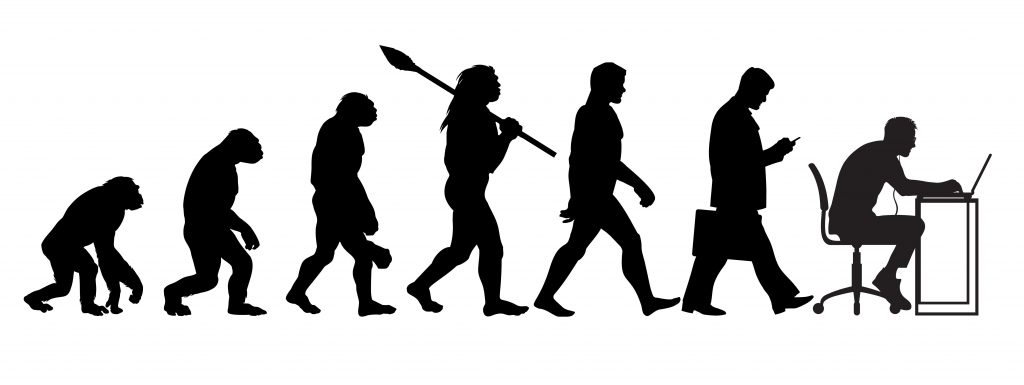
The Dangers of Prolonged Sitting From An Evolutionary Standpoint
The human body is a bit of a mosaic, a product of the environment that we and our ancestors adapted to over the course of our development, which began some two million years ago. Thus, to understand the challenges that modern life presents, we have to look through an evolutionary lens to see if our current practices align with what our bodies were designed to do. There is a novelty to sitting in a chair. You might not think of it as such, as sitting is a natural act that many land-based mammals often do, but chairs are a different story. From an evolutionary perspective, our hunter gatherer ancestors didn’t have the luxury of supermarkets or ordering in, and so they procured their food often only after expending considerable energy. As such, conservation of energy was critical, as they and our subsequent subsistence farmer ancestors had to work to obtain almost every calorie they consumed and the super energy dense foods we take for granted today don’t exist in nature. As such, they all had the tendency to sit or lie down whenever possible to conserve energy. An inclination that remains with us all today. However, we know from observation of traditional hunter gatherer societies that our Neolithic forefathers didn’t have chairs. They would squat or sit on the floor in a cross-legged position, or with their feet extended and the closest to a chair would be a stool or fallen log. But nothing remotely resembling the office chairs, sofas and recliners we spend hours in today.
A large-scale survey found that both adults and children in the United States spend a little more than half (55%) of their waking hours sitting down. [1] It sounds like a lot, but traveling in a car, sitting in a train or bus, working at your desk, sitting down to eat, watching television, watching a performance, using a computer or playing a video game all involve sitting. Usually in comfortable positions that make it possible to do so for extended periods of time, and the amount of time we spend adds up. Keep in mind that these figures represent activity levels of Americans BEFORE the COVID-19 pandemic. So, it would be rational to conject that the percentage of time spent sitting would have increased with the lockdowns and changes to work and recreation habits that have come as a result of the virus. We know from so many other examples that when we deviate from ancestral norms and behaviors that it introduces evolutionary discord. A discrepancy between what our bodies were designed to do and what modern life encourages us to do, which often manifests itself in the form of negative health outcomes.
It is not that modern life is designed to be destructive, but in our path of least resistance trying to control our environment and in so doing creates an environment that is alien to the ones we are readily adapted to, it inevitably creates complications. The consequence of the evolutionary discord created by bodies designed for movement spending prolonged periods sitting is a direct association with higher incidences of cardiovascular disease, muscular degeneration, reduced bone density, elevated levels of tissue inflammation and increased overall risk of mortality.[1,2] Not that long ago, bed rest was the clinical recommendation for just about every physical ailment but not so today, as we now know that prolonged bed rest leads to musculoskeletal complications such as include loss of muscle strength and endurance, contractures and soft tissue changes, disuse osteoporosis, and degenerative joint disease. Too much time lying down can also bring about cardiovascular complications such as increased heart rate, decreased cardiac reserve, orthostatic hypotension, and venous thromboembolism.
Why Prolonged Sitting In Comfortable Chairs Creates The Same Problems As Too Much Bed Rest
Patients recovering from almost all ailments recover faster when they spend less time lying in bed and it bears noting that from a physiological standpoint, sitting in a comfortable chair isn’t that different than lying in bed. Consider the mechanics of sitting in a comfortable chair and compare it to lying down in a bed and the similarities become readily apparent. Your leg muscles aren’t supporting your weight and if you are in a chair with back and arm rests, you are very close to the state you would be lying down on a bed. Which is why recliners and office chairs feel so comfortable, as we have almost no muscular activity requirements while sitting in them and it’s also the reason why we tend to slouch forward on computers or slouch backwards in an attempt to have our muscles do as little work as possible. Keep in mind the path of least resistance that our bodies will always try to take, as the less work our muscles do, the more comfortable we feel. But this comfort comes at a price.
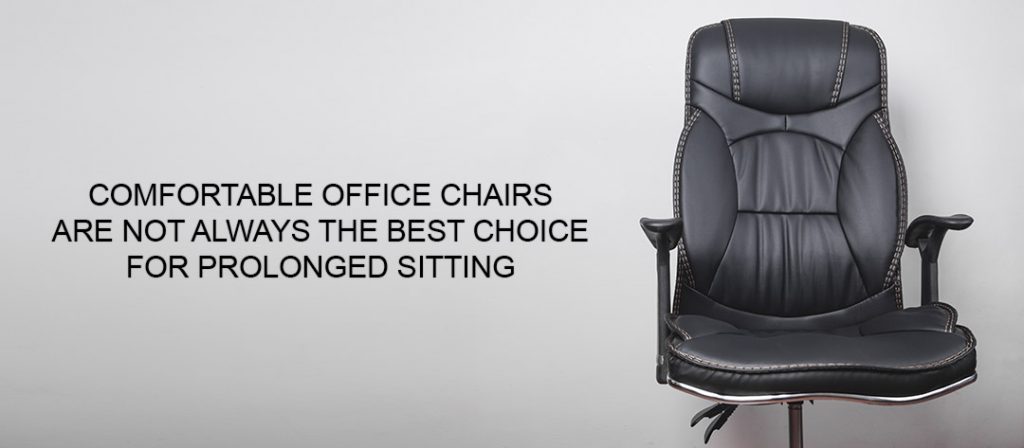
How Muscles Are Adversely Affected By Too Much Sitting In Comfortable Chairs
All muscles work on the use it or lose it principle. They get weaker and atrophy (shrink) in response to inactivity and get stronger and grow in response to activity. (See my article, What Happens When You Stop Lifting Weights) We have two main types of skeletal muscle fibers, Type I, called slow twitch and Type II which is referred to as fast twitch. Type II fast twitch muscle fibers are the ones most of us envision when you mention the word “muscles.” Some jokingly refer to them as “Hollywood muscles” and they tend to be more developed than Type I fiber groups. These are the muscle fibers you would predominantly find in your arms, shoulders, pectorals and upper leg areas. Muscle fibers optimized for short bursts of activity. On the other hand, Type I muscle fibers are smaller, denser and optimized for endurance and ongoing activity. These are the primary muscle fibers found in your lower back and abdominals, which are constant contract to keep you upright if you are doing any form of activity or standing upright. (Note that there are some, but not as much fast twitch muscle fibers in these muscle groups and in the same way, some slow twitch muscle fibers in muscle groups like the arms and legs.)
The problem with Type II muscle fibers though, is that they weaken and deteriorate rapidly in response to inactivity. Prolonged periods sitting in a comfortable chair means you aren’t continually contracting the muscles in your legs, back and abdominals to support your weight, or as you naturally move and shift. And so these muscles rapidly deteriorate as it’s not a way of sitting that our bodies are adapted to. Take away modern amenities and chairs, and it’s clear to see that our natural state of rest would be squatting, sitting on the ground, or maybe on a stool. However, if you have spent years sitting in comfortable chairs and haven’t worked on keeping those muscles in good shape, squatting or sitting on the floor would be uncomfortable as your body needs well developed slow twitch fibers in your midsection, legs and shoulders to be able to sit in those positions. Which is why natural sitting postures maintain back, leg and abdominal strength, whereas sitting in a chair diminishes it.
The bigger Type II “Hollywood” muscle fibers also suffer from inactivity brought on by long periods of sitting in chairs. Muscles conform and shape in response to our movement, or in this case, lack of movement. If you observe at the position of your legs in a comfortable chair, you will see that your hip and knee joints are immobilized at a ninety-degree angle. Which, in a natural sitting environment would be unlikely, and so as time goes by the muscles in your hip flexors atrophy, and in some cases permanently shorten. So, when you stand up, these shortened muscles at the top of your legs will be pulled and tilt your pelvis forward. Which sets in motion an unfortunate series of events: the pelvic tilt creates an overly increased curvature of the spine, and the hamstring muscles at the back of your legs contract to counter this exaggerated curvature. Which then leads to a “flat back posture” that hunches your shoulders and forces you to angle your neck and head forwards, which if not corrected can cause neck and upper back pain and strains. All of which has certainly increased in incidence as more people work from home and spend more time sitting in front of a screen or sitting down in general.
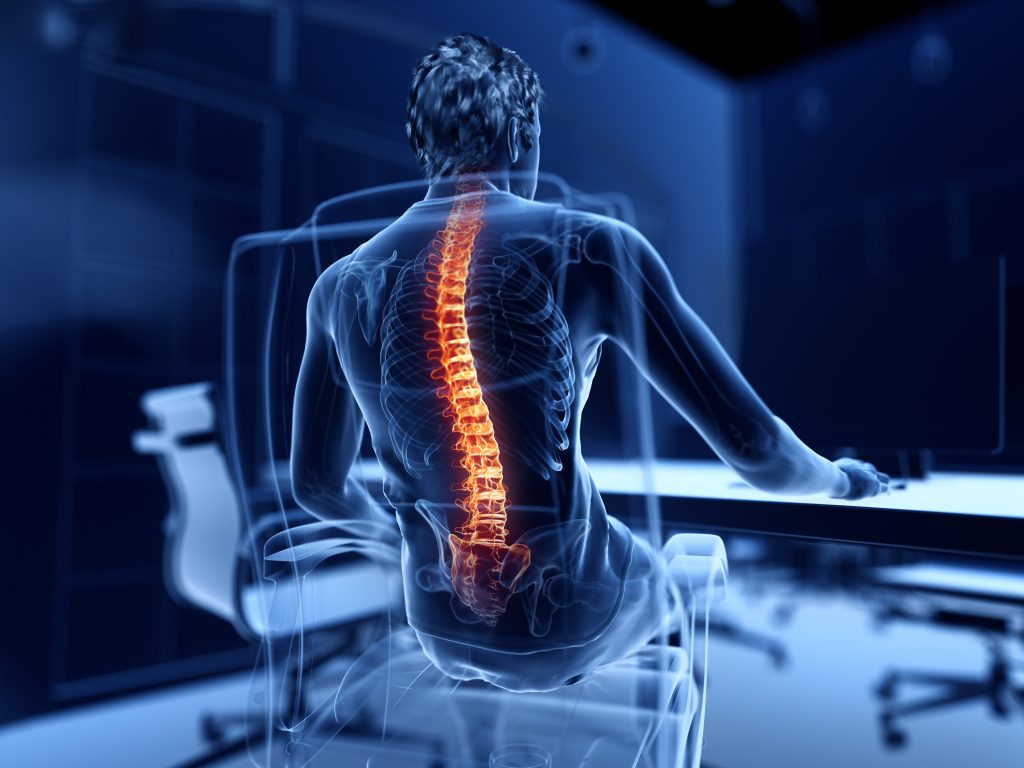
The Connection Between Lower Back Pain and Prolonged Sitting
Our muscles work in teams, and when one unit can’t pull its fair share of the weight, it causes an imbalance in the entire structure. The imbalances caused by sitting in chairs for long periods have been implicated as a major cause of nonspecific back pain. Which is back pain that seems to come out of nowhere and has no connection to any trauma or structural injuries. Chronic lower back pain prevalence increases from your thirties up to your sixties, more so in those who do not exercise regularly, and it is more prevalent in women than in men. Modern medicine can’t pinpoint a specific cause, but given the fact that it’s far more prevalent in developed countries where people spend so much time sitting, and universally in vocations where sitting is more common, (taxi drivers and sewing machine operators for example) there is a strong link to the evolutionary discordance being to blame. Our hunter gatherer ancestors and a their way of living as observed in modern tribes does not impose anywhere near as much stress on the lower back, nor does it result in muscular imbalances as commonly seen in both agricultural populations and sedentary Western lifestyles.
The Importance of Balance for Healthy Core Muscles
Our ancestors, as we mentioned previously, don’t sit in chairs or sleep on soft mattresses but they also don’t subject their back to the aptly termed “back breaking” labor associated with traditional farming. Instead they engage in activities that constantly engage their abdominal, leg and lower back muscles, but not excessively repetitive movements, or ongoing activities with significant amounts of weight on their backs. They also don’t remain in any fixed position for extended periods of time, thus avoiding potential muscle shortening, deterioration or muscle inflexibility. Too much strain on lower backs from excessive and continued activities (as in the case of a mover) can cause damage to bones, ligaments, disks and nerves, whereas too little activity (as in the case of someone who sits in front of a computer all day) creates weakened and inflexible back muscles that tire easily and have a lower percentage of important Type I muscle fibers. Which leads to reduced core strength and increased likelihood of muscle strains, torn ligaments, stressed joints, and disk damage when they engage in activities that require any significant back muscle involvement. Which is often what happens when a sedentary individual engages in any activity that places unaccustomed stress on the lower back muscles, like shoveling snow or moving furniture without enough time for lower back muscles to adapt to the new stress.
What we can take away from this is the importance of balance. Namely adequate amounts of stress on the lower back muscles, but not too much. We lift very little in regular modern life, and even less so in a world where more people work from home, as labor saving devices make the carrying any type of load a rarity outside of a gym or exercise setting. In this environment, combined with excessive time spent in comfortable chairs, lower back muscles slowly deteriorate, but most will carry on relatively oblivious to any increased muscle weakness or inflexibilities until that one day where you make a move and find yourself in agonizing pain. To treat that sudden an unexpected lower back pain, pain killers and muscle relaxants are prescribed and the instinctive, but terribly flawed, response is to avoid any activity that uses your lower back muscles. Which over time increases any underlying weaknesses and inflexibility, thus creating a cycle that leaves you more prone to injury in the future.

The Importance Of A Balance Resistance Training Program
It sounds counterintuitive but the best remedy for avoiding lower back pain is using your back muscles more. It’s what we are designed for and since we don’t have natural environments where we would regularly carry moderate loads, it’s important that resistance training be incorporated, especially if you spend a significant amount of time sitting down. Which is why resistance training, aerobic exercise and even other forms of exercise like yoga are highly effective in lessening and alleviating back pain long term. But keep in mind that for long term muscle strengthening, aerobics and yoga can’t compete with the muscle building effects of strength training with weights, as neither of those activities can create the conditions of progressive overload needed to significantly increase muscle size and strength.
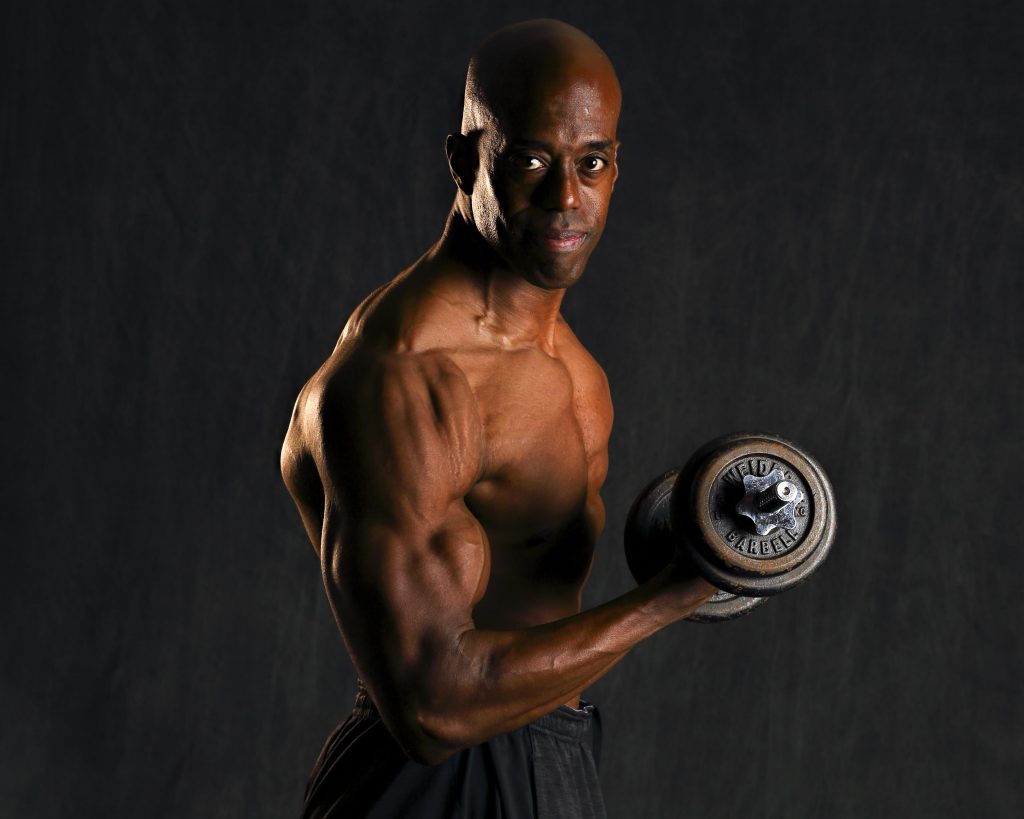
A properly executed weight training program will also work and stimulate every muscle in your body, and help increase muscle size and flexibility in both the lower and upper body. And over time imbalances will begin to even themselves out and the muscular deterioration that prolonged sitting can create can be completely reversed. To that end everyone should be engaging in some form of weight bearing training at least two to three times a week. Bearing in mind again, that too much load bearing exercise can also have a negative long-term affect on joint health and the key is to go with the grain of our biology instead of against it. Weight training almost every day may sound like a good idea. Especially if you spend a lot of time sitting in a chair, but muscles only grow when they rest, and so you need some time in between workouts to get the most out of it. Remember also the aforementioned examples where regular and continued load on the back muscles among farmers and movers didn’t create super strong lower back muscles, it only created more problems. So, balance is key! It should be noted as well that I weight train three times a week myself, and have followed that exact routine now for the past thirty years. Just three days a week of training has allowed me to successfully compete as a natural bodybuilder with impressive maximum lifts, while avoiding the back and joint pain most of my peers who train five times a week or more often have to deal with. Consistency and adequate rest is key, not frequency.

Stools: A Simple And Natural Alternative To Comfortable Chairs
There are other steps that you can take if your life requires you to spend a good amount of time in front of a screen. While it might sound like good advice to tell someone to get up from your comfortable chair to stretch and move around from time to time, my experience is that this only works short term. In time the natural inclination towards the path of least resistance inevitably wins out with most people and they revert to old patterns of prolonged sitting. It’s also hard to remember to stand up if you are really engaged in your work. Hours can feel like minutes when you are seriously focused, so unless you use an alarm, it can be difficult to gauge is what the optimal amount of sitting and standing time should be. An alarm going off at half hour or even 15 minute intervals is a great way to stay active and keep mobile while having to sit at your desk or in front of a screen, as is one other simple and low-cost way to alleviate the long term muscle and joint deterioration that sitting in a chair can create. Simply swap out your comfortable chair for a stool. A stool is the only sitting device universally found among traditional cultures, and it’s what I started using when I realized I would be training clients full time online for hours at a time.
I use a drum stool and alternate between standing up and sitting on the stool. I have a rather comfortable office chair, but I use it ONLY for writing articles (like right now) or editing photographs, otherwise the stool is my default sitting device. You can use any stool, but the one I use is particularly comfortable, as it is designed for drummers who spend hours sitting while playing. Interestingly enough, even though it’s very well padded and extremely comfortable to sit on for SHORT periods of time, when I spend hours on the stool training clients, it reminds me just how much back and abdominal muscles are engaged when you sit upright. When I was sitting in the comfortable office chair, I would often find myself relaxed and staying on the computer, but after a few hours on the stool, the last thing I want to do is to remain seated, and so I spend less time in front of the screen. Even during my sessions, I stand up far more often than I ever did when I sat in the office chair, as you naturally feel like standing and stretching out when using a stool. Best of all, if it’s adjusted to the point where your feet are on the ground with knees almost extended, you avoid the 90 degree angle issues and keep your leg muscles activated and in a structurally sound position at all times. Standing desks are another way to help reduce the amount of time spent sitting, and can be fantastic if used in conjunction with a stool. But keep in mid that there is ample evidence that prolonged periods of time standing up can also be harmful to lower back muscles. But alternating between standing and a stool is a great middle ground.
There are other concerns with prolonged sitting such as how it may be a contributing factor to overall weight gain. Inactivity isn’t as much a cause of weight gain as poor dietary choices and or overeating (See our seminar on Weight Loss During Times Of Reduced Activity). But at the end of the day we can’t lose sight of the fact that we are creatures made to move, and that exercise acts as somewhat of a reset button that clears the mind from the background noise of our thoughts. We also have to bear in mind that our lives might be different from those of our ancestors, but we are still and always will be evolving animals. And as such novel activities like sitting in comfortable chairs for long periods should always be looked upon as something we should strive to avoid as much as possible. No one can say for certain if a COVID-19 vaccine would mean a return to life as it was before the pandemic in terms of people working from and going to school remotely. We have had other near-miss pandemics in the past like SARS, Ebola, MERS and avian-flu and serious ones like the 1918 flu. As such there might be a reluctance for many to return to dense office spaces and filled classrooms, but either way, we need to ensure that we are mindful of how much time we spend sitting down, regardless of whether we are at home or not.
No Time To Train? Click To Get Celebrity Trainer Kevin Richardson’s Free Ebook!
High Intensity Bodyweight Training: Ballistic Pushups & Dips!
This was a tough one!
Starts out with ballistic push ups (like clap pushups but without the clap as my wrist is still not 100%) nonstop for 20 reps, then all out on dips for 10 reps.
To say it was painful would be an understatement, but you just have to push through and keep on going.
Still training, hope you are too and as always, Excelsior!!! #naturallyintense
#hometraining #homeworkout #homeworkout #highintensitytraining #naturalbodybuilder #naturalbodybuilding #fitover40 #naturalbodybuildingvideos #chestday #chesttraining #naturalbodybuildingtips #pushups #dips #bodyweighttraining #highintensitytrainingtips #drugfreebodybuilding #calesthenics
Kevin's Unconventional Biceps Training- 3-6 Minutes a Week!
In this video I go over my biceps training using the Naturally Intense High Intensity Training protocols that helped me go from having arms measuring 11.5 to 12 inches to 18 inches drug free!
It's an unconventional approach for certain, but it's one that's helped my arms grow and the hundreds of men and women I have trained over the past 30 plus years.
Now, my success isn't due to being genetically gifted, as it took me the better part of 11 years to get my arms up to those measurements.
Which is significant as it works and been been proven time and time again to work for the average man or woman trying to grow their arms without drugs.
It's my hope that these high intensity training protocols can help you as much as they helped me!
Click on my bio link to see the full video on my YouTube channel and thanks as always for taking the time to look at my work!!! Excelsior!!! #naturallyintense
#highintensitytraining #naturalbodybuilder #naturalbodybuilding #fitover40 #naturalbodybuildingvideos #armworkout #bicepsworkout #naturalbodybuildingtips #biceps #armtraining #highintensitytrainingtips #drugfreebodybuilding #barbellcurls
At the Lancaster Classic Day 2 Elimination Rounds Against European Champion, and World Record Holder Leo Pettersen @leo_barebow_archer
I don't talk much about it but I'm also a competitive barebow archer (surprise!) and last Saturday I had the honor of making it to Day 2 at the Lancaster Archery Classic in the Barebow Division, as I made the top 64 out of 267 competitors and had a chance to shoot with some of the greatest barebow shooters on the planet!
I didn't make it past Leo, but it was a real rush to be there and a huge thanks to my coach, Joe MyGlyn @prolinearchery for helping me get there.
Thanks as well to my good friend @sean_chan33 for all of his help from the very start, to my line buddy Aaron Shea for taking the shot and showing up to support!
My thanks as well to rob_kaufhold for putting on and promoting one of the best archery tournaments on earth!
Thanks also to to everyone who took the time to send a supporting word and I am looking forward to next year!!! #naturallyintense #barebow
#lancasterclassic #lancasterarcheryclassic2024 #lancasterarchery #archery #fitover40 #barebowrecurve #targetarchery
Dumbo, Brooklyn circa 2004
This shot was taken as part of the promotion for my Naturally Intense DVD and was about a year after my last bodybuilding competition.
It was a grueling photoshoot.
We started at about 10 am and finished around 4pm and I was completely spent, but the more we shot the sharper I looked, so we kept on going.
It's nice to look back from time to time and as tired as I was, we all had a blast!
My thanks to @stephanie_corne_artwork, @https://pulse.ly/itgnag2dec and @ftaz1 for taking the shots!!!
Thanks for watching and as always, Excelsior!!! #naturallyintense
#naturalbodybuilder #naturalbodybuilding #throwback #fifthavenuegym #5thavenuegym #drugfreebodybuilding #naturalbodybuildinglifestyle #gymlife #gymmotivation #naturalbodybuildingmotivation #bodybuilding #blackandwhite #instablackandwhite #bnw
Can You Build An Impressive Physique Training Only At Home?
Absolutely!
I stopped training in commercial gyms as of March 2020 and have been training at home ever since.
Initially I was admittedly worried that I might lose some of my gains or not make as much progress, but that certainly wasn't the case.
I've consistently continued to improve with my high intensity workouts and muscles have no idea where they are training.
As long as the criteria of adequate intensity and overload are met, there will be an adaptive response and your muscles will get bigger and stronger.
So don't worry at all about where you train, focus instead of what will be the best way for you to always be training!
Thanks for watching and as always, Excelsior!!! #naturallyintense
Kevin's Three Day Training Spilt!
For the past 33 years I have trained three times a week with Naturally Intense High Intensity Training workouts lasting 10, 15 to 20 minutes max.
It's a training split tried and testes not only in it's helping me realize my goal of becoming a successful natural bodybuilder, but it's also helped hundreds of men and women over the past three decades.
I have tested just about every possible training split imaginable and for this particular style of high intensity training, this particular grouping consistently yields fantastic results.
I hope it helps you as much as it's helped me over the years and thanks so much for taking the time to look at my work.
Keep training hard and Excelsior!!! #naturallyintense
Excelsior!!! #naturallyintense
#trainingsplit #3daytrainingsplit #threedaytrainingsplit #naturalbodybuilding #naturalbodybuilder #naturalbodybuildingvideo #naturalbodybuildingmotivation #naturalbodybuildingtips #drugfreebodybuilding #bodybuilding #highintensitytraining #highintensitytrainingtips
405 Stiff Leg Deadlift for 7 Reps! High Intensity Training.
First leg workout of the year and already pushing it!
I haven't done a stiff leg deadlift over 315lbs for about 3 years at this point, and I did my last set with 315lbs and comfortably got to 10 reps and decided I had far too much gas left in the tank and that I should go up in weight.
So I did.
I figured I might get a solid 6 reps in, but I made it to 7 and I think I could have gone on to get a full 10 reps BUT that's when good judgement prevailed.
As a bodybuilder having not trained this heavy for so many years, the shock of this much weight would be more than enough to stimulate muscle growth, and doing more reps wouldn't yield any greater returns, only increase the likelihood of injury.
It's not about the numbers, it's about training to a point where you achieve your goal, and it's important to have a goal in mind as a bodybuilder based on increasing muscle mass rather than hitting a particular number.
Besides, if in my 20's I never did more than 405lbs on a stiff leg deadlift, it doesn't make any sense going heavier than when I am almost 50!
Could I deadlift more at this point?
Absolutely but just because you can doesn't mean you should!
So keep those weights in a good working range, keep it safe and as always Excelsior!!! #naturallyintense
#hometraining #homeworkout #homeworkout #roguerack #highintensitytraining #naturalbodybuilder #naturalbodybuilding #fitover40 #naturalbodybuildingvideos #backworkout #naturalbodybuildingtips #backtraining #highintensitytrainingtips #drugfreebodybuilding #fitoverforty #deadlift
Turning 50 in a few months...
Not much of a big deal for me as I still feel pretty much the same but I hope that my example helps show what can be done with a lifetime commitment to eating well and training consistently!
Thanks for coming along on the journey and as always, Excelsior!!! #naturallyintense
#naturalbodybuilder #naturalbodybuilding #healthylifestyle #fitover40 #drugfreebodybuilding #naturalbodybuildingmotivation #natty #fitness
Please note that all material is copyrighted and DMCA Protected and can be reprinted only with the expressed authorization of the author.
References:
Matthews CE, Chen KY, Freedson PS, et al. Amount of time spent in sedentary behaviors in the United States, 2003–2004. Am J Epidemiol. 2008
Eaton SB, Konner M, Shostak M. Stone agers in the fast lane: chronic degenerative diseases in evolutionary perspective. Am J Med. 1988
Lieber R.L. Skeletal Muscle Structure, Function, and Plasticity: The Physiological Basis of Rehabilitation Lippincott Williams & Wilkins; 2009
Meucci RD, Fassa AG, Faria NM. Prevalence of chronic low back pain: systematic review. Rev Saude Publica. 2015
Lieberman D.E. The Story of The Human Body. Vintage 2014
Adams M.A. et al. The Biomechanics of Back Pain. Edinburg: Churchill-Livingstone 2002
Dittmer DK, Teasell R. Complications of immobilization and bed rest. Part 1: Musculoskeletal and cardiovascular complications. Can Fam Physician. 1993
Bener A, Dafeeah EE, Alnaqbi K. Prevalence and correlates of low back pain in primary care: what are the contributing factors in a rapidly developing country. Asian Spine J. 2014
Foster NE. Barriers and progress in the treatment of low back pain. BMC Med. 2011
Rapoport J, Jacobs P, Bell NR, Klarenbach S. Refining the measurement of the economic burden of chronic diseases in Canada. Chronic Dis Can. 2004
Biglarian A, Seifi B, Bakhshi E, et al. Low back pain prevalence and associated factors in Iranian population: findings from the national health survey. Pain Res Treat. 2012
Latza U, Kohlmann T, Deck R, Raspe H. Can health care utilization explain the association between socioeconomic status and back pain? Spine (Phila Pa 1976) 2004
Walker BF. The prevalence of low back pain: a systematic review of the literature from 1966 to 1998. J Spinal Disord. 2000
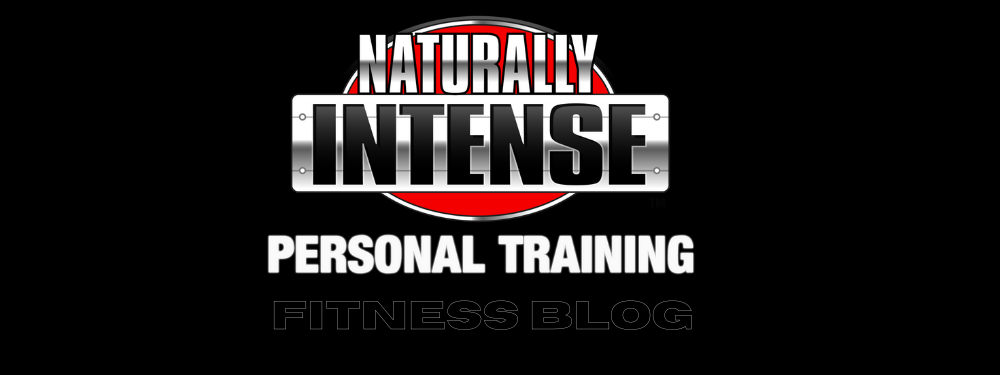

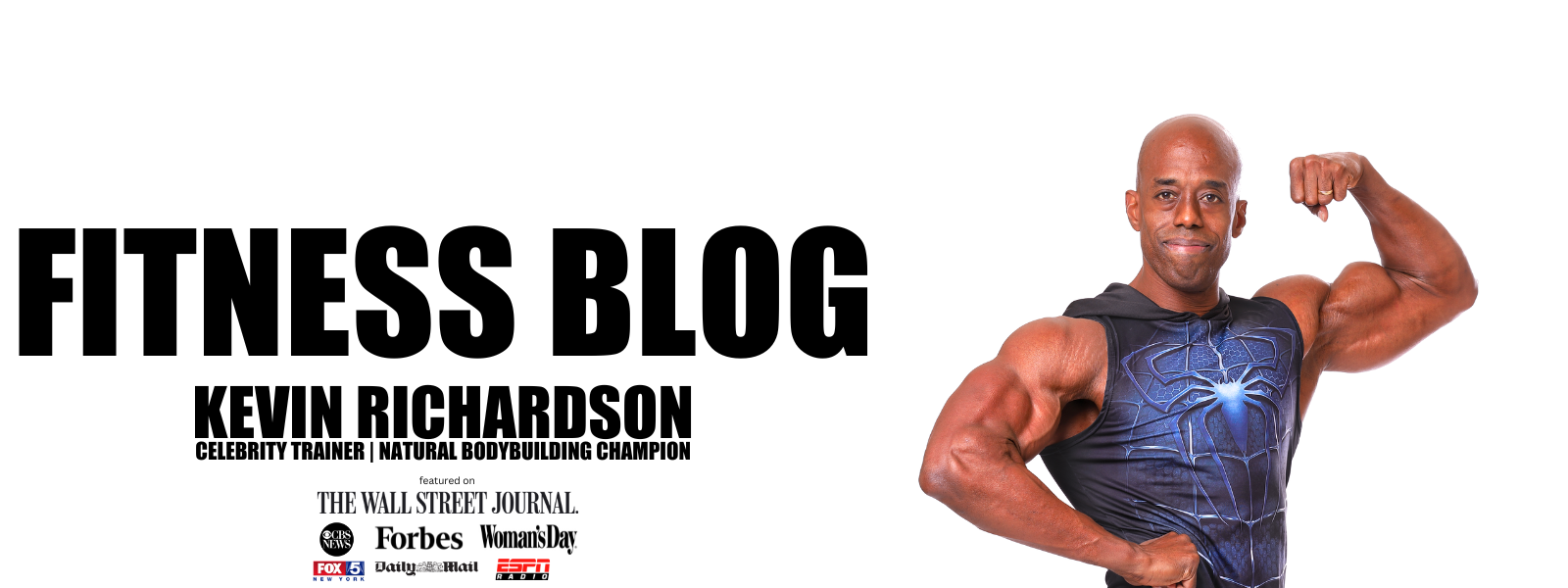
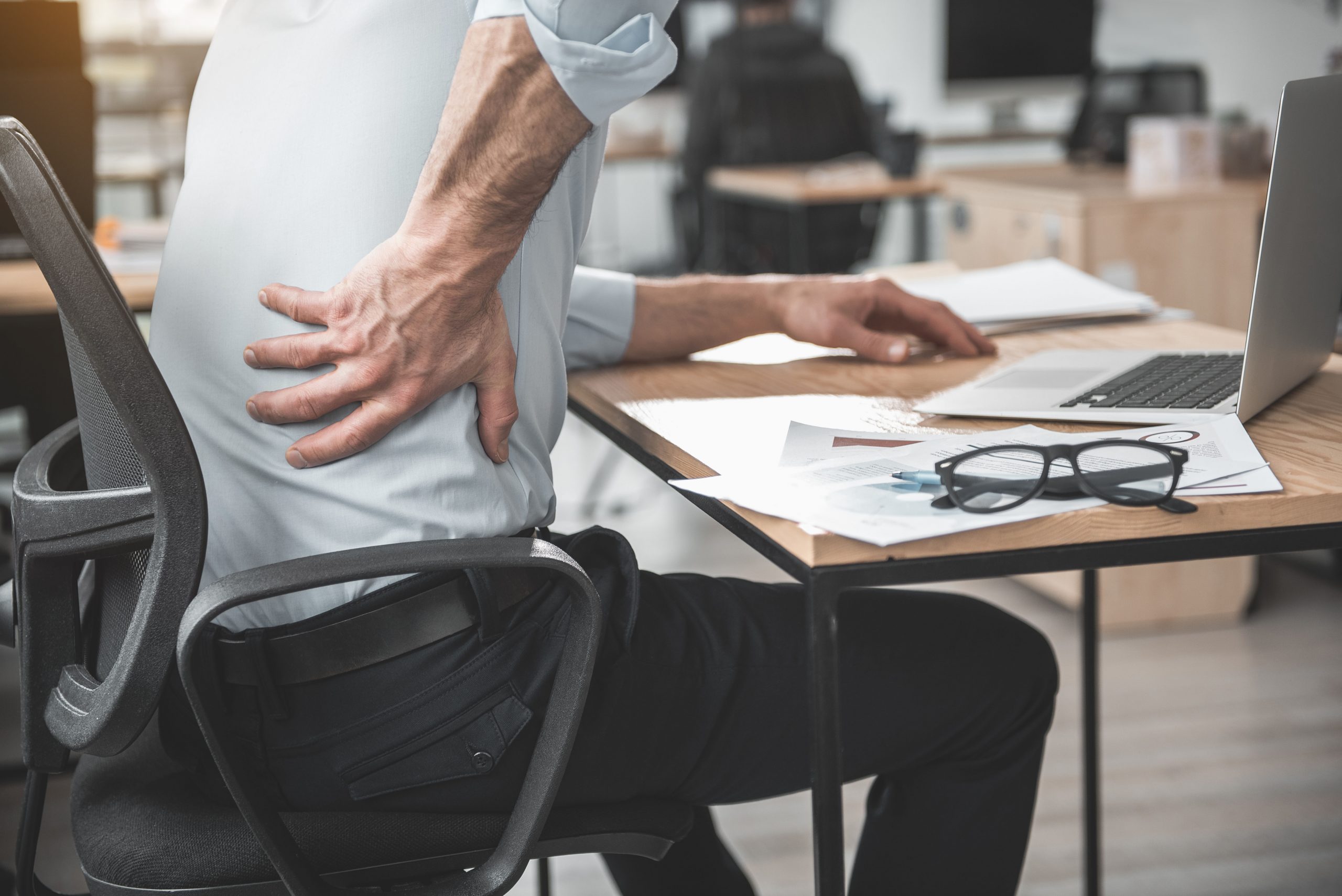




”Consistency and adequate rest is key, not frequency.” Well said. Kevin you are a genius. This article, as written, breaks it down in steps, like never before that makes perfect sense. I can relate to the drum throne as I play drums also and you are correct about the posture. I admire your persistence. You were always like that anyways. Well done, My Old Pal.